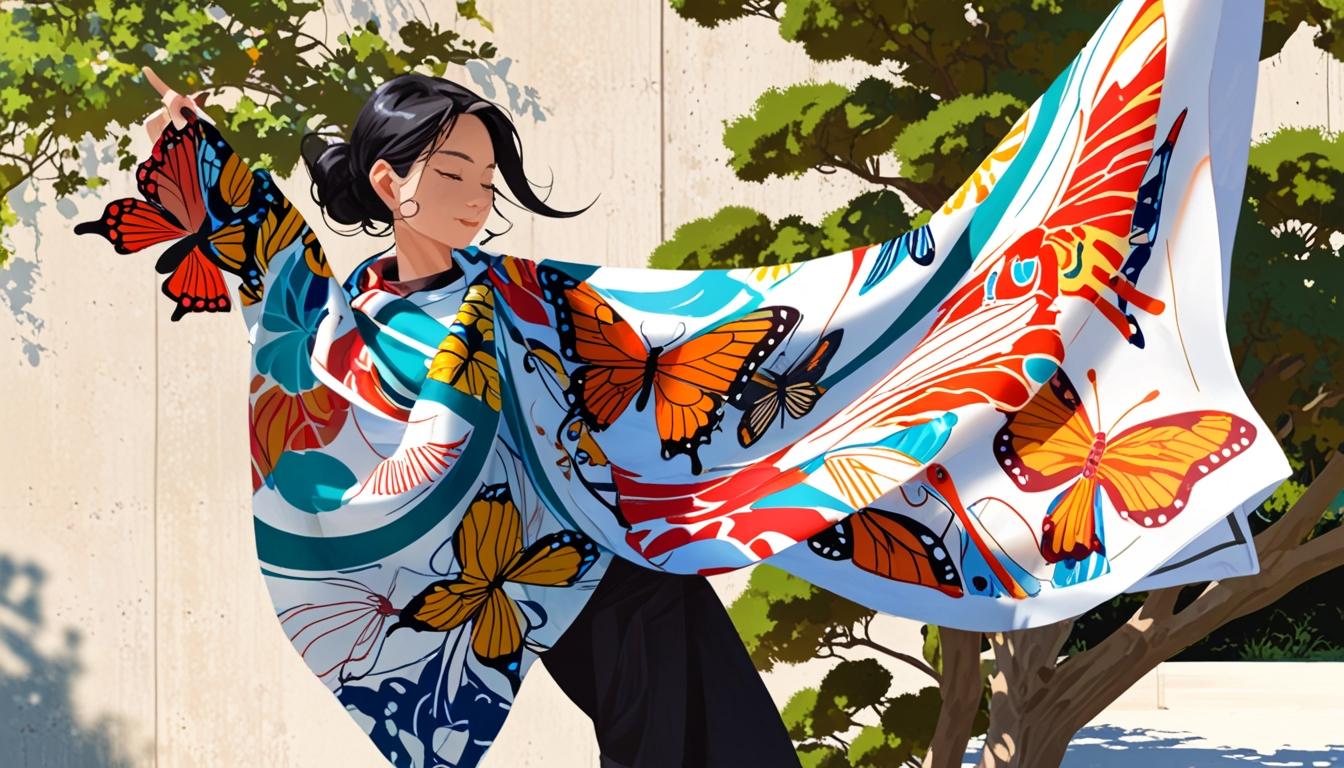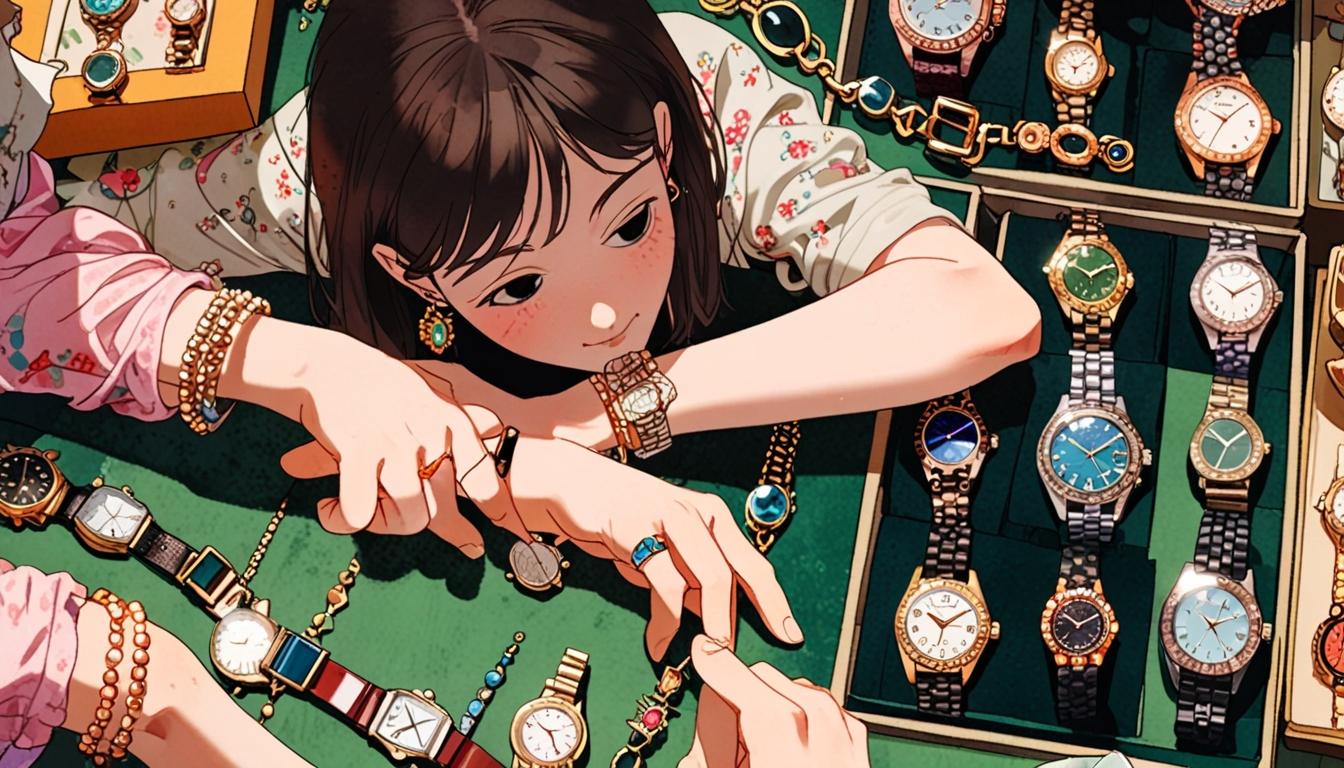Yuri Tsuzuki’s new collection of furoshiki cloths, inspired by nature and Japanese culture, promotes eco-friendly gift wrapping and artistic expression.
Greenville-based artist Yuri Tsuzuki has introduced a unique collection of furoshiki wrapping cloths through her collaboration with the home decor brand Porch and Parlour Home. This initiative marries traditional Japanese artistry with contemporary sustainable practices, promoting a thoughtful approach to gift-giving.
Tsuzuki’s furoshiki designs feature strikingly rich colors and intricate imagery that captures movement inspired by nature. “Nature is very much an inspiration. I think more than anything because of its importance in Japanese culture and its intransigence, impermanence, and fragility,” she stated. Tsuzuki elaborated on her artistic vision, saying, “I am always trying to capture the wind, because the wind is invisible until it touches something or someone, at which point you know that it is there.”
The collections, titled “Chasing Butterflies” and “Two Hearts. One Sky,” consist of four designs each. The imagery in these pieces includes butterflies dancing across abstract landscapes and trees embracing homes, symbolizing intertwined lives and the tranquility associated with home. One noteworthy design features a butterfly gliding past the iconic curves of Liberty Bridge.
Tsuzuki’s artistic career spans more than three decades, notably marked by her first exhibition at the Greenville County Museum of Art in 1994. Elements of her new furoshiki designs echo themes she has explored in various mediums, including a series of butterflies that once adorned downtown Greenville as a symbol of growth and her prominent installation, Butterfly Journey, at Cancer Survivors Park.
The production of the furoshiki takes place entirely in South Carolina, linking back to Tsuzuki’s textile heritage. Her family, having migrated from Japan to Greenville in the 1960s, has a history in textile manufacturing. Tsuzuki reflects on this evolution, stating, “My father and grandfather built many manufacturing mills across the South. I have always wanted to design a line of textiles.”
The furoshiki cloths, measuring 27 inches and made from hemmed cotton or polyester, are designed to be versatile beyond just gifting. They can be used to wrap items of various shapes, allow for easy transportation, and serve as reusable accessories like scarves or picnic mats. “The main thing is that it fits inside of the cloth itself,” she noted.
One of the critical features of furoshiki wrapping is its sustainability. Unlike conventional gift wrapping methods that typically involve disposable materials, Tsuzuki’s method eliminates the need for boxes, tape, ribbons, or scissors. “If you mess up, you unwrap it and do it again, rather than wasting paper,” she explained.
Beyond its practicality, Tsuzuki indicates that the act of wrapping a gift in furoshiki also serves as a gesture of connection. “What I like is you’re sharing and teaching how to wrap with the next person,” she remarked, emphasizing the importance of knowledge transfer in the wrapping process. “You’re giving the recipient a second gift that wraps the first gift, and the receiver can decide to keep it or give it to someone else,” she added.
The history of furoshiki is rooted deep in Japanese culture. The term translates to “bath sheet,” recalling its origins in public bathhouses, where people used cloths marked with family crests to store belongings. Over time, the use of furoshiki evolved into a method for wrapping everyday items. However, with the post-World War II rise of disposable bags and paper packaging in Japan, the practice waned. In recent years, there has been a resurgence in its popularity as cultural emphasis shifts back to sustainable practices amidst growing environmental concerns. Tsuzuki noted, “Furoshiki is sustainable and reusable, so it’s really had a resurgence.”
The unique furoshiki cloths created by Tsuzuki are available for purchase at Porch and Parlour Home, either individually or in sets of four. Art enthusiasts and those interested in viewing Tsuzuki’s broader body of work can do so on her personal website or through her social media channels.
Source: Noah Wire Services




